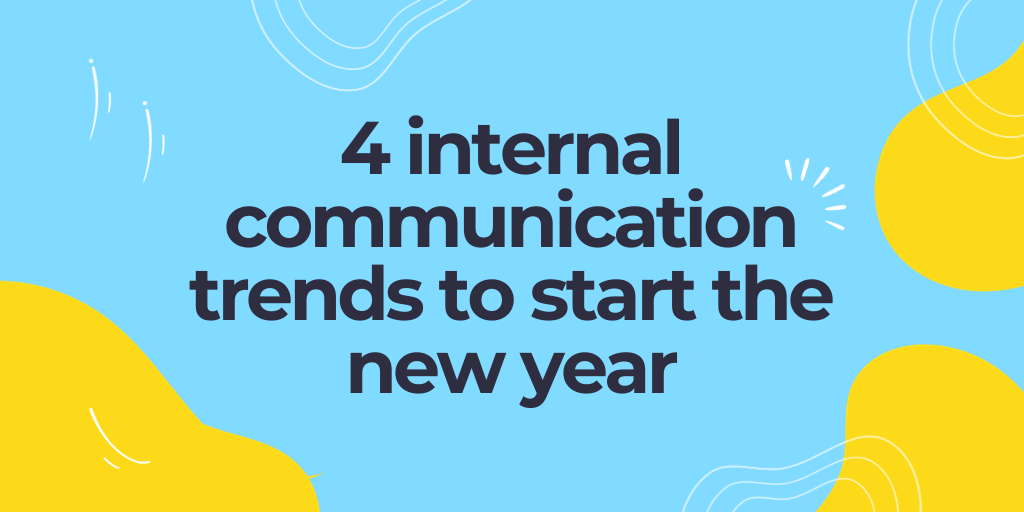
The results of the Gallagher State of the Sector 2024 report are out. This year’s big takeaway places internal communication at a crossroads between the potential of AI and upholding the human touch and authenticity. More importantly, the document analyzes the purpose of internal communication in the post-Covid workplace.
Content
- 1 | Gloomy outlook or a reality check?
- 2 | The power of being strategic
- 3 | AI: Friend or foe?
- 4 | We can handle change
- 5 | People managers: The missing piece
1 | Gallagher State of the Sector 2024: Gloomy outlook or a reality check?
Remember that “golden era” of internal communication everyone predicted during COVID-19? Although we have earned a “seat at the table,” our actual influence seems to be “waning.”
While redefining our roles, internal communicators are becoming more business-savvy, aligning with the company’s business goals. Despite this shift, organizational barriers persist. Some of the obstacles mentioned in the report:
- Lack of time/capacity in my team was at the top
- Lack of support from senior leaders (10th place)
- Lack of involvement in decision-making (13th place)
It seems as if we want to have a more strategic role, but operational issues are top of mind. Amid the solemn outlook, Gallagher State of the Sector 2024 report tries to elucidate the purpose of internal communication.
Strategic alignment takes center stage, with 86% of IC respondents prioritizing it. However, those reporting to HR seem torn, with risk management taking the lead.
The engagement survey keeps its center place as the preferred listening channel, which is a big opportunity area. Employees today crave frequent and timely feedback, which helps them feel valued and grow.
Some of the success indicators that communicators are accountable for:
- 74% employee engagement
- 70% strategic awareness
- (only) 49% behavior change
Looking ahead, engaging teams around purpose, strategy, and values remains an internal comms top priority, witnessing a 12% increase from last year. Leadership visibility also leaps forward, surpassing the importance of enhancing people manager communication skills.
2 | The power of being strategic
Gallagher’s annual report highlights that communicators play a pivotal role in shaping organizational culture, particularly in areas like values, strategic vision, and employee recognition.
In this context, strategic communicators are the folks who align their actions with the bigger picture, using data and insights to prove their ROI and influence leadership. They see beyond the day-to-day and connect the dots between business goals, initiatives, departments, and targets.
The document also emphasizes that appropriate measurement data influences leadership and builds trust. There is a need to go beyond vanity metrics such as reach and focus on the outcomes that drive business value, like understanding and behavior change.
The burning question is, how much influence do we have as communicators?
There is a real struggle to get buy-in and recognition from senior leadership. Many internal comms professionals face the challenge of expectation versus capacity, trying to balance strategic vision with the day-to-day content demands.
However, getting approval from senior leadership will only come with us setting objectives, planning, reflecting on progress, and remaining flexible enough to pivot when plans take an unexpected turn. First, we must become strategic in order to be seen as such by company leadership.
3 | AI: Friend or foe?
This year, the concern around AI revolves around creating an employee experience that doesn’t sacrifice authenticity and empathy. Those working on comms seem to have moved away from “ChatGPT is coming for our jobs” to focus on leveraging AI to enhance our capabilities –a supercharged communication sidekick, freeing time up for more strategic thinking.
68% of communicators surveyed expect a high AI impact in the next five years. Yet, organizations’ lack of guidance and training poses a challenge. Only 29% of organizations offer AI training, leaving comms pros feeling unsure and underutilized.
As communicators, we must explore how AI can make our jobs easier and better. Those who have already experimented with AI tend to have a more positive view of its potential.
As I always say when trying new tools: “Experiment in a safe environment and take what works.” A second piece of advice is to dive deep into understanding how your data will be used and what you consent to when using AI chats.
4 | We can handle cange
Change is coming in 2024. For the first time, the Gallagher State of the Sector 2024 report shows change activities in the topmost-communicated topics internally.
Internal communicators are being more proactive and getting involved in planning and anticipating employee needs in matters of organizational transformation. Strategic communicators, in particular, excel at measuring impact and (again) focusing on outcome metrics like behavior change.
Still, only a quarter of those surveyed have pointed out that they are not given the necessary information to prepare for changes.
5 | People managers: The missing piece
The Gallagher State of the Sector 2024 report emphasizes the link between effective people managers and a more informed workforce. 48% of managers were more likely to meet communication expectations when internal comms supplied them with resources, beating HR and L&D.
So, while we communicators work our magic, we must recognize the crucial role managers play in achieving awareness, with higher managers’ performance directly connected to increased employee understanding.
Lastly, I would like to address the elephant in the room – internal communicators’ well-being. Many of us have reported stagnating or deteriorating well-being over the past year. This report is a call to action for organizations to prioritize the mental health of their communicators, recognizing the impact it has on the overall effectiveness of communication efforts.
💛 Hang in there, team. Change is coming.

